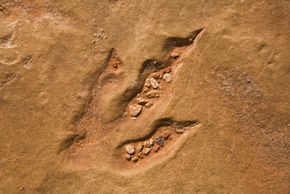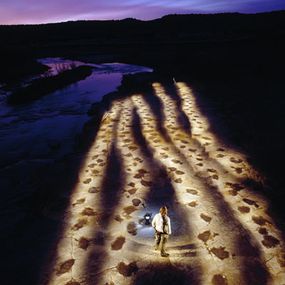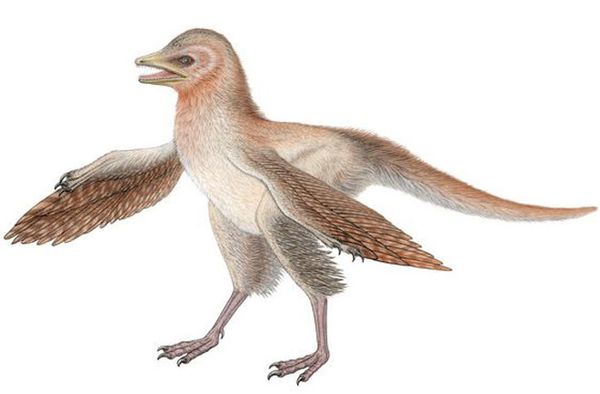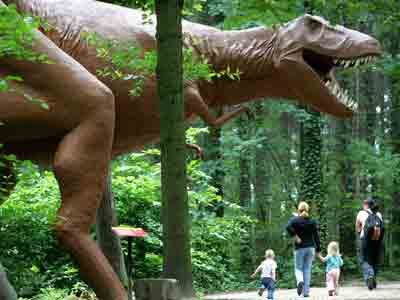If you were standing at the bottom of a sheer rock face looking at a crisscrossing array of dinosaur tracks high above your head, it might seem as though you were witnessing the impossible. On top of being preserved in solid stone, the tracks run along a nearly vertical surface.
But the formation of such tracks started with an ordinary walk on the beach. Millions of years ago, dinosaurs left their tracks in sediment. Typically, the soil was wet -- part of a shoreline, a mudflat or even the bottom of a shallow sea. As the area dried, the tracks hardened. Eventually, another layer of sediment filled the prints, protecting them from erosion or damage. Very heavy dinosaurs could also leave underprints, stepping so forcefully that they compressed deeper layers of soil, essentially leaving their tracks protected underground.
Advertisement
Over millions of years, these layers of sediment hardened into sedimentary rock -- the same type of rock that preserves dinosaurs' fossilized bones. Then, over another long time span, erosion, weathering and geological forces gradually revealed the buried tracks. In some cases, these same forces have drastically changed the position of the land, moving it from flat to vertical.
For a track made tens of millions of years ago to survive until the present, several specific steps had to happen. The sediment the dinosaurs walked through needed to be just the right texture -- not too soft and not too hard. Prints in very wet soil would collapse on themselves, and walking in hard soil didn't make much of an impression. It also helped when the sediment that filled the tracks fell slowly and was a different type than the one on the ground. For example, falling ash drifting from a distant volcano would be a better preservative than a sudden mudslide burying an expanse of muddy tracks. And, of course, geological events must have combined in just such a way to make the tracks visible today.
Dinosaur tracks have been found on every continent of the world except Antarctica, but they're still comparatively rare. Their rarity and longevity aren't the most amazing things about them, though. Often, paleontologists can puzzle out what dinosaurs were doing when they made their tracks. Sometimes, the tracks reveal more information about dinosaur behavior than skeletal fossils can. Learn how on the next page.
Advertisement




